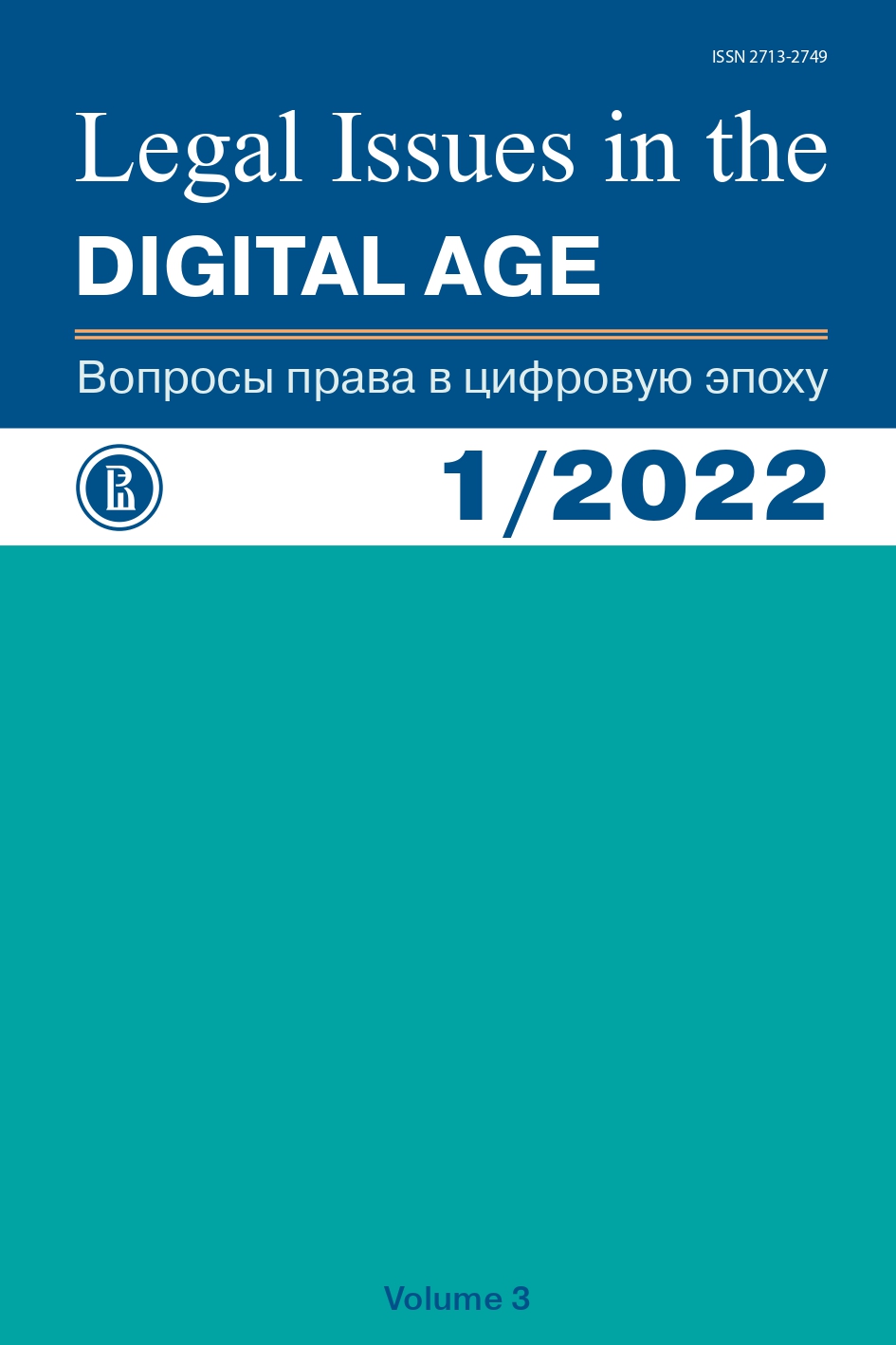Thoughts on the EU Digital Single Market Strategy and the New Consumer Sales Directive
Abstract
The paper describes the impact of the EU ‘Digital Single Market Strategy’ (DSMS) on consumer law. The essay analyses, in particular, the new Consumer Sales Directive [Directive (EU) 2019/771] and its recent transposition into Italian Law. Starting from the assumption that the Information-Digital Age certainly has social-economic impacts, therefore also legal ones, the paper first of all illustrates the Strategy promoted in 2015 by the European Commission. In order to represent how the Commission intends to face the new digital “revolution” and its economic opportunities, this essay — through a brief description of the main pillars of the DSMS — tries to circumscribe the outcomes of the Strategy and its correlation with the new legal regime proposed for the building of the so-called ‘Internal Market 2.0’. Moreover, the paper analyses the important role that consumer protection plays in relation to the European Commission’s DSMS. With this in mind, the article examines the main aspects of the so-called ‘New Deal for Consumers’ (NDC), promoted in 2018 by the Commission in order to accompany the implementation of certain parts of the DSMS. In this first part of the article, a sort of “toolbox” is offered to the reader with the purpose of developing a better understanding of the current EU trends in consumer law. Following this line of research, the second part of the article focuses on the Directive (EU) 2019/771 proposed by the European Commission to regulate certain aspects concerning contracts for the sale of goods. In the final section, the paper describes the principal characteristics of the Italian transposition of the New Consumer Sales Directive (NCSD), as implemented in November 2021. In the conclusion, the paper suggests that the most recent EU interventions on consumer law are still based on a traditional understanding of consumer protection and, with regard to certain aspects, do not appear to be very different from the previous legislation (this is the case of the so-called hierarchy of remedies).
References
Bar-Gill O., Ben-Shahar O. (2013) Regulatory Techniques in Consumer Protection: A Critique of European Consumer Contract Law. Common Market Law Review, no. 50, pp. 109–125. DOI: https://doi.org/10.54648/COLA2013039
Cafaggi F., Iamiceli P. (2017) The Principles of Effectiveness, Proportionality and Dissuasiveness in the Enforcement of EU Consumer Law: The Impact of a Triad on the Choice of Civil Remedies and Administrative Sanctions. European Review of Private Law, no. 25, pp. 575–618. DOI: https://doi.org/10.54648/ERPL2017038
De Franceschi A. (2015) The EU Digital Single Market Strategy in Light of the Consumer Rights Directive. Journal of European Consumer and Market Law, no. 4, pp. 144–148.
De Franceschi A. et al. (2016) European Contract Law and the Digital Single Market: the Implications of the Digital Revolution. Cambridge-Antwerp-Portland: Intersentia, 266 p. DOI: https://doi.org/10.1017/9781780685212
Garben S. et al. (2020) The Internal Market 2.0. Oxford: Bloomsbury Publishing, 393 p. DOI: https://doi.org/10.5040/9781509939060
Grochowski M. (2020) European Consumer Law after the New Deal: A Tryptich. Yearbook of European Law, no. 39, pp. 387–422. DOI: https://doi.org/10.1093/yel/yeaa016
Grundmann S., Hacker P. (2017) Digital Technology as a Challenge to European Contract Law. From the Existing to the Future Architecture. European Review of Contract Law, no. 13, pp. 255–293. DOI: https://doi.org/10.1515/ercl-2017-0012
Howells G. et al. (2018) Rethinking EU Consumer Law. London-New York: Routledge, 349 p. DOI: https://doi.org/10.4324/9781315164830
Iamiceli P. (2019) Online Platforms and the Digital Turn in EU Contract Law: Unfair Practices, Transparency and the (pierced) Veil of Digital Immunity. European Review of Contract Law, no.15, pp. 392–420. DOI: https://doi.org/10.1515/ercl-2019-0024
Inglese M. (2019) Regulating the Collaborative Economy in the European Union Digital Single Market. Cham: Springer, 198 p. DOI: https://doi.org/10.1007/978-3-030-30040-1
Jansen S. (2018) Consumer Sales Remedies in US and EU: Comparative Perspective. Cambridge: Intersentia, 191 p. DOI: https://doi.org/10.1017/9781780687629
Lombardi E. (2021) La tenzone tra diritto dei consumatori e tecnologia all’insegna del consumptor technologicus. In: G. Capilli (ed.) I contratti del consumatore. Torino: Giappichelli, pp. 23–66 (in Italian)
Mańko R. (2017) Towards New Rules on Sales and Digital Content. Available at: https://www.europarl.europa.eu (accessed: 22.12.2021)
Pistor K. (2019) The Code of Capital: How the Law Creates Wealth and Inequality. Princeton (N.J.): Princeton University Press, 297 p. DOI: https://doi.org/10.1515/9780691189437
Sartor G. (2020) New aspects and challenges in consumer protection. Available at: https://www.europarl.europa.eu (accessed: 22.12.2021)
Savin A. (2021) Harmonising Private Law in Cyberspace: The New Directives in the Digital Single Market Context. In: M. Durovic et al. (eds.) New Directions in European Private Law. Oxford: Hart, pp. 213–232. DOI: https://doi.org/10.5040/9781509935642.ch-010
Schwab K. (2016) The Fourth Industrial Revolution. Cologne-Geneva: World Economic Forum, 198 p.
Smits J. (2016) The New EU Proposal for Harmonised Rules for the Online Sales of Tangible Goods (COM (2015-635): Conformity, Lack of Conformity and Remedies. Maastricht European Private Law Institute. Working Paper No. 2016/01. Available at: https://papers.ssrn.com (accessed: 22.12.2021)
Somma A. (2018) Dal diritto dei consumatori al reddito di cittadinanza: un percorso neoliberale. In: G. Conte et al. (eds.) Dialoghi con Guido Alpa. Roma: Roma TrE-Press, pp. 515–536 (in Italian)
Terryn E. (2019) A Right to Repair? Toward Sustainable Remedies in Consumer Law. European Review of Private Law, no. 27, pp. 851–873. DOI: https://doi.org/10.54648/ERPL2019044
Tommasi S. (2020) The ‘New Deal’ for Consumers: Towards More Effective Protection? European Review of Private Law, no. 28,pp. 311–332. DOI: https://doi.org/10.54648/ERPL2020016
Authors who publish with this journal agree to the Licensing, Copyright, Open Access and Repository Policy.










